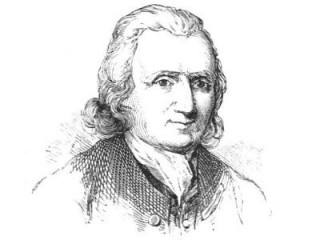
Cadwallader Colden biography
Date of birth : 1688-02-07
Date of death : 1776-09-20
Birthplace : Ireland
Nationality : American
Category : Famous Figures
Last modified : 2011-01-26
Credited as : Botanist, and politician,
The American botanist and politician Cadwallader Colden, a diverse thinker whose scholarship encompassed natural history, the nature of the universe, and medicine, was also lieutenant governor of New York.
Cadwallader Colden was born on Feb. 7, 1688, in Ireland of Scottish parents; his father was a minister. He received a degree from the University of Edinburgh and then studied medicine in London. He emigrated to Philadelphia in 1710 and went to New York in 1718 at the request of Governor Robert Hunter, who made Colden surveyor general of the colony in 1720. This sinecure allowed him the leisure for a scientific career, although he remained interested in politics, serving as a member of the Governor's Council.
In 1739 Colden left New York City to live at his farm, Coldengham, where he spent much of his time in scientific study. He began corresponding with Peter Collinson, the London botanist, who brought Colden into the international natural history circle. Colden became one of the first men in Europe or America to completely master the new Linnaean system of plant classification, which he rigorously applied to the flora surrounding his farm. These descriptions, which he circulated in Europe, drew praise even from Linnaeus himself. Colden criticized the Linnaean reliance on sexual characteristics and suggested a more natural system.
Being located in America had been an advantage for his botanical work, but when Colden turned from natural history to speculations on the nature of the universe, even his finely honed, highly rational mind could not make up for his geographical isolation. An Explication of the First Causes of Action in Matter (1745) was his attempt to discover the cause of gravity, postulating a division of the material world into matter, light, and ether. Although it is possible to read an equation of energy with matter in the work, it was in general a rationally deduced system in no way based on the observations of scientists in Europe. He sent copies to European scientists, most of whom refused to comment, but the German scientist Leonhard Euler called it absurd. Colden never accepted the verdict and hoped, by tinkering, to perfect his theory. He consistently produced respectable medical treatises, although his abstract rational tendencies led him to write a dissertation on yellow fever without ever actually having seen a case of the disease.
In 1760 he realized an old ambition to be lieutenant governor of New York. He was a confidant of Governor George Clinton and wrote many speeches and papers for him. In 1764 he declared his intention to enforce the Stamp Act and the following year was burned in effigy by a mob. He tried to balance himself between the radicals and conservatives in the 1770s. After the Battle of Lexington, Colden retired to his Long Island estate, where he died on Sept. 28, 1776.
Colden had married Alice Cristie in 1715 and among their children, a daughter, Jane, became the first woman botanist. Their son David was also a scholar of some standing.
There is no up-to-date biography of Colden. Different aspects of his career are treated in Alice M. Keys, Cadwallader Colden, a Representative Eighteenth Century Official (1906), and in Isaac Woodbridge Riley, American Philosophy: The Early Schools (1907). General background may be found in Brooke Hindle, The Pursuit of Science in Revolutionary America, 1735-1789 (1956).
















